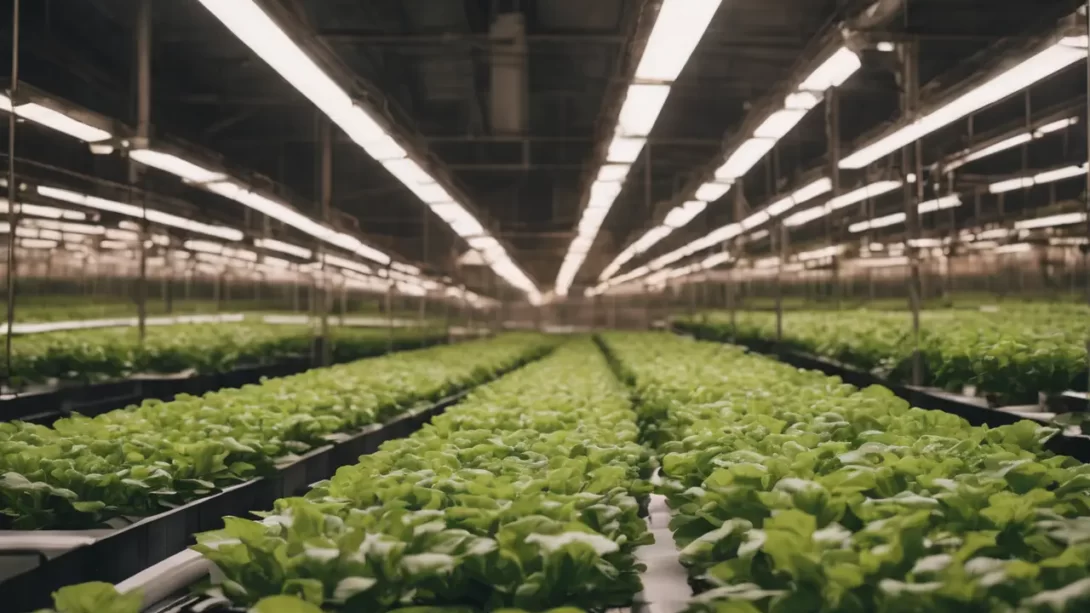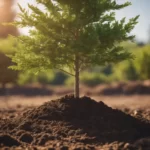Hydroponics, the art of growing plants without soil, has gained popularity for its efficient use of space and resources. Starting seeds correctly is a critical step in establishing a successful hydroponic garden. Unlike traditional soil-based methods, hydroponic seed starting requires specific techniques and conditions to ensure healthy seedling development. This article will guide you through the process, highlighting the unique aspects of hydroponic germination compared to soil-based methods.
Hydroponic Seed Starting
Hydroponic seed starting involves germinating seeds in a soilless medium and later transferring them to a hydroponic system. This method differs from traditional seed starting because it doesn’t use soil as a growing medium. Instead, it relies on a sterile, inert medium that provides support to the seedlings while allowing roots to access nutrient-rich water easily. Key factors for successful germination in hydroponics include proper moisture, warmth, light, and air circulation.
Choosing the Right Seeds
Selecting the right seeds is crucial for hydroponic gardening. While most plants can be grown hydroponically, some varieties perform better than others. Look for seeds labeled as suitable for hydroponic or greenhouse cultivation. These varieties are often more disease-resistant and better adapted to the conditions in a hydroponic system.
Consider the type of seeds: hybrid, heirloom, or organic. Hybrids might offer more disease resistance and uniformity, while heirlooms can provide unique flavors and varieties. If organic gardening is important to you, ensure your seeds are certified organic. Always purchase seeds from reputable suppliers to ensure quality and high germination rates.
Preparing for Seed Starting
Before sowing your seeds, gather all the necessary supplies. You’ll need a growing medium such as rockwool, coconut coir, or peat pellets. These media are ideal for hydroponics as they retain moisture and allow for good air flow. You’ll also need seed trays or small containers, a heat mat to maintain a consistent temperature, and a lighting system for after the seeds have germinated.
Setting up your seed starting area in a clean, controlled environment is vital. Ensure the space is free from pests and contaminants, as young seedlings are particularly vulnerable. A stable environment with controlled temperature and humidity will increase your success rate.
Seed Starting Process for Hydroponics
The process begins with preparing your chosen growing medium. If using rockwool cubes, soak them in water with a pH adjusted to about 5.5. For other media like coconut coir or peat pellets, follow the specific preparation instructions provided by the manufacturer.
Once the medium is ready, sow the seeds at the appropriate depth. This usually involves making a small indentation in the medium and placing one or two seeds in it. Cover the seeds lightly with the medium to ensure contact while still allowing air to reach the seed.
Maintain optimal conditions for germination by keeping the growing medium consistently moist but not waterlogged. The use of a heat mat can help maintain a steady temperature, which is crucial for germination. Most seeds require temperatures between 70-80°F (21-27°C) for optimal germination.
In the initial stages, light is less critical, but once seedlings emerge, providing sufficient light is essential for healthy growth. A grow light system can offer the right spectrum and intensity of light needed for young plants.
Transferring Seedlings to Hydroponic System
Once your seedlings have developed their first true leaves, they are typically ready to be moved to the hydroponic system. This stage is crucial as young plants are delicate and can be easily stressed. Gently wash any excess growing medium from the roots, taking care not to damage them. If you used rockwool or a similar medium that doesn’t easily wash away, you can transfer the entire cube directly into the hydroponic system.
In the hydroponic system, ensure that the roots of the seedlings are able to reach the nutrient solution. The system should support the plants while allowing their roots to access water, oxygen, and nutrients. Adjust the water and nutrient levels to suit the young plants. Initially, a milder nutrient solution is often recommended to avoid overwhelming the seedlings.
Monitoring and Caring for Seedlings in Hydroponics
After transplanting, it’s important to closely monitor the seedlings for signs of stress or disease. Keep an eye on the color and condition of the leaves, as well as the growth rate. Daily checks are ideal, especially in the early stages.
Nutrient management is key in hydroponics. Regularly check and adjust the nutrient levels in your system to meet the needs of your growing plants. The pH of the nutrient solution should also be monitored and maintained within the optimal range for the plants you are growing, typically between 5.5 and 6.5.
Additionally, ensure that your hydroponic system provides adequate aeration to the roots. Oxygen is essential for healthy root growth and the overall health of the plants. Many hydroponic systems include air pumps or other methods to ensure oxygenation of the nutrient solution.
Managing Light, Temperature, and Humidity
Proper lighting is essential for the growth of hydroponic plants. Seedlings require sufficient light to grow but are sensitive to intense light. LED or fluorescent grow lights are popular choices, offering the necessary light spectrum without excessive heat. Adjust the duration and intensity of the light to mimic natural daylight patterns and meet the specific needs of your plants.
Temperature and humidity control are also important in a hydroponic setup. Maintain a consistent and suitable temperature for your plants, generally within the range of 65-75°F (18-24°C). Humidity should be kept in check to prevent issues like mold or mildew. This can be managed through proper ventilation and, if necessary, the use of dehumidifiers.
Adjustments in the Hydroponic System for Young Plants
As your seedlings adapt to their new hydroponic environment, it’s essential to make adjustments tailored to their growth stage. Young plants have different nutritional needs compared to mature ones. Start with a nutrient solution that is more diluted than what you would use for fully grown plants. Gradually increase the concentration as the plants develop. Also, be vigilant about the system’s water level; young roots should always have access to water but also need ample air space to breathe.
Regular Monitoring for Optimal Growth
Consistent monitoring plays a pivotal role in the health of your hydroponic plants. Check the pH and nutrient levels of the water regularly, adjusting as necessary to maintain the ideal conditions. Observe your plants for signs of nutrient deficiencies or excesses, adjusting your feeding regimen accordingly.
Watch for any signs of disease or pests. Hydroponic systems, while generally less prone to these issues than soil-based setups, can still experience problems. Early detection and intervention are key to managing these challenges effectively.
Advanced Considerations for Hydroponic Seedlings
As you gain experience, you might explore more advanced hydroponic techniques. Experimenting with different growing mediums, nutrient solutions, and types of hydroponic systems can lead to better growth and yields. Research and understand the specific needs of each plant variety you grow, as this can vary significantly.
Troubleshooting Common Issues
New hydroponic gardeners often face common issues such as algae growth, root rot, or nutrient imbalances. Algae can be minimized by controlling light exposure to the nutrient solution and maintaining cleanliness. Root rot is often a result of poor oxygenation; ensure your system has adequate aeration. Nutrient imbalances can be avoided by regular testing and adjustments of your nutrient solution.
Record-Keeping for Continuous Improvement
Maintaining detailed records of your hydroponic garden’s progress, including nutrient levels, pH, growth patterns, and any issues encountered, is invaluable. This information can help you fine-tune your process and achieve better results over time.
Conclusion
Starting seeds for hydroponic systems requires attention to detail and a willingness to learn and adapt. From choosing the right seeds to monitoring young plants in your hydroponic system, each step is crucial in raising healthy, robust plants. Embrace the process and don’t be discouraged by setbacks. Hydroponic gardening is a rewarding endeavor that offers continuous learning opportunities and the joy of watching your plants thrive in a soilless environment. With patience and practice, you can cultivate a flourishing hydroponic garden that provides fresh produce right at your fingertips.



